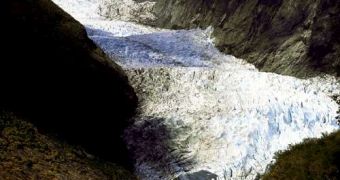Many boat captains have complained throughout the years that, at some coordinates on the ocean, their ships lose speed and almost grind to a halt, although the engines are fully powered and there is no visible change in the consistency of the water. Oceanologists have identified the cause for this occurrence in the so-called "dead water."
According to new researches done at the University of Lyon, this phenomenon appears when boats of various sizes pass over multi-layered water – that is to say, areas of the seas where saltier water is covered by a thin layer of sweet water, coming from molten glaciers or drifting icebergs. Because the two water types have different densities, sweet water remains on the surface, while the salty, heavier water, sinks.
When a boat passes over an area like this, it generates a disturbance at the boundary between the two water layers, which is similar in shape to an underwater wave. This wave slowly gathers momentum as the ship moves forward and starts "chasing" it. When it catches up with it, the water displacement that the underwater wave generates is enough to deprive the ship of its means of propulsion. That is to say, sometimes even the rudder is useless, as very low density water is gathered behind the ship.
To draw a parallel, it's like trying to breathe normally at an altitude of 20,000 feet (6000 meters), where oxygen concentrations are far below what the body is adapted to. As a result, hallucinations and head aches could occur. It's the same with the ships. When the area behind them offers no "solid ground" on which to push, the propellers turn useless.
The scientists in Lyon came to this conclusion after dragging toy boats on the surface of a long tank, where various water concentrations had been previously identified with dye. They even managed to film how the underwater waves work and you can watch the video below. This experiment could offer researchers deeper insight into how exactly dead water is formed and how its effects can be adverted.
The YouTube video detailing the discovery:

 14 DAY TRIAL //
14 DAY TRIAL //